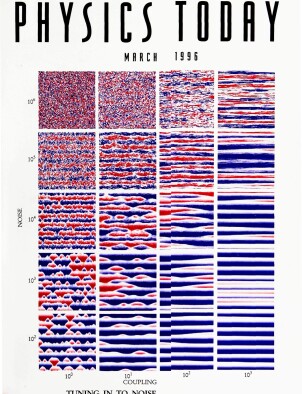James Dewar, His Flask and Other Achievements
DOI: 10.1063/1.881490
James Dewar is widely known today for his pioneering work in cryogenics. During his lifetime as well, he was amply recognized for that portion of his wide‐ranging scientific work, receiving several international medals and the honor of being elevated to the British peerage as Sir James Dewar. Figure 1 is a photograph of Dewar taken in London at the height of his career, around 1900. The setting is the Royal Institution of Great Britain, where he carried out most of his cryogenics research. Dewar holds in his hands his most famous invention, the dewar flask. This double‐walled container, constructed with reflective surfaces and insulated by an intervening vacuum, has been universally used to this day to store cryogenic fluids. So ubiquitous are these vessels in laboratories around the world and so frequently are they referred to by scientists in ordinary conversation that they are often simply called dewars. What is more, the general public has long made use of smaller versions of them as food and drink containers known as vacuum bottles or thermos flasks.
This article is only available in PDF format
References
1. Lady Dewar, J. D. H. Dickson, H. M. Ross, E. C. S. Dickson, eds., The Collected Papers of Sir James Dewar, Cambridge U.P., Cambridge, UK (1927).
2. K. Mendelssohn, The Quest for Absolute Zero, McGraw‐Hill, New York (1966).
3. J. Dewar, Proc. R. Soc. Edinburgh 6, 82 (1867).https://doi.org/PRSEAE
4. See, for example, R. T. Morrison, R. N. Boyd, Organic Chemistry, 6th ed. Prentice Hall, Englewood Cliffs, N.J. (1992).
5. J. Dewar, Philos. Mag. 44, 400 (1872).https://doi.org/PHMAA4
6. J. Dewar, Trans. R. Soc. Edinburgh 27, 167 (1873).
7. An account of this lecture appears in Proc. R. Inst. Gt. Br. 8, 657 (1878).
8. J. Dewar, Proc. R. Inst. Gt. Br. 14, 1 (1893).
9. J. Dewar, Proc. R. Inst. Gt. Br. 15, 815 (1898).
10. R. G. Scurlock, Proc. R. Inst. Gt. Br. 65, 145 (1994).
11. See, for example, P. F. Dahl, Superconductivity, AIP, New York (1992).
12. J. Dewar, J. A. Fleming, Proc. Roy. Soc. 60, 76 (1896).
13. M. S. Osofsky, W. L. Lechter, L. E. Toth, E. F. Skelton, A. R. Drews, C. C. Kim, B. Das, S. B. Qadri, A. W. Webb, R. J. SoulenJr, J. Superconductivity 18, 511 (1995).https://doi.org/JOUSEH
14. M. Proust, Swann’s Way (the first part of Remembrance of Things Past), translated by C. K. Scott‐Moncrieff, Random House, New York (1964).
15. J. Dewar, Proc. R. Instit. Gt. Br. 24, 197 (1923).
More about the Authors
Robert J. Soulen. Naval Research Laboratory, Washington, DC.




